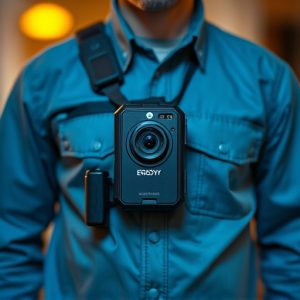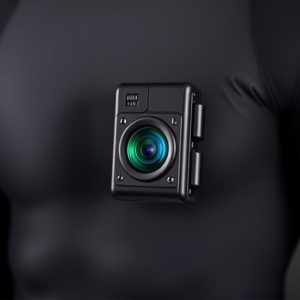Spy Body Camera with Audio: Enhancing Transparency and Accountability in Law Enforcement
Spy body cameras with audio are transformative tools in surveillance technology, offering detailed, …….
Spy body cameras with audio are transformative tools in surveillance technology, offering detailed, first-hand perspectives on events with both high-resolution video and clear auditory evidence. These devices are engineered to be unobtrusive and comfortable for long-term use, equipped with high-fidelity microphones to capture nuanced audio without background noise. Their capabilities extend beyond personal security into various fields like law enforcement, where they serve as indispensable tools for evidence collection, featuring night vision, motion detection, and expandable storage options. The intuitive design allows users to easily review both audio and video records, which is crucial for accurate analysis and reportage. These cameras are not just a luxury but a critical feature for ensuring comprehensive documentation in any situation. Their integration into law enforcement has revolutionized policing by promoting transparency and accountability, acting as an objective source of evidence to deter misconduct and provide context for use-of-force situations. When selecting such devices, it's important to consider key technical specifications like Full HD video resolution, high-fidelity audio capture, wide-angle lens, low-light performance, extensive storage capacity, loop recording, battery life, and features like Wi-Fi connectivity and cloud storage services. However, the deployment of these cameras raises significant privacy, legal, and ethical concerns that must be addressed through stringent guidelines, compliance with local laws, and ethical surveillance practices to protect individual privacy rights while maintaining security interests.
Exploring the multifaceted role of spy body cameras with audio in modern law enforcement, this article delves into their pivotal impact on transparency, accountability, and the legal landscape. From technical specifications that define a top-tier device to the nuanced debate around privacy concerns, readers will gain a comprehensive understanding of these critical tools. We’ll navigate through the practical considerations for deploying spy body cameras with audio in various settings, ensuring informed decision-making in their use.
Understanding Spy Body Cameras with Audio: A Comprehensive Guide
Spy body cameras with audio capabilities represent a significant advancement in surveillance technology, offering a first-person perspective on events as they unfold. These devices are designed to be compact and discreet, ensuring that they can be worn comfortably without drawing attention. The integration of high-quality microphones allows for clear audio recording alongside the video footage, providing a more comprehensive documentation of incidents. Users benefit from the ability to capture verbal interactions, which can be crucial in understanding context and maintaining accountability.
The functionality of these devices extends beyond personal security; they are also valuable tools for law enforcement, private investigators, and individuals who require evidence of events. The audio component eliminates the limitations of silent videos, offering a full narrative of what is happening. With advanced features such as night vision, motion detection, and built-in storage that can be expanded through microSD cards, these spy body cameras with audio are equipped to handle various environments and situations. Their user-friendly interface ensures that both audio and video can be easily accessed and reviewed, facilitating efficient analysis and reporting. The integration of this dual recording capability is not just a convenience but an essential feature for capturing the whole story in any given scenario.
The Evolution of Law Enforcement: The Role of Spy Body Cameras with Audio
In recent years, the integration of technology in law enforcement has significantly advanced, particularly with the advent of spy body cameras equipped with both video and audio capabilities. These devices have become a cornerstone in modern policing, providing a clear and reliable record of interactions between officers and civilians. The evolution of these tools reflects a broader shift towards transparency and accountability within law enforcement agencies. Spy body cameras are instrumental in capturing the nuances of any given situation, offering a first-person perspective that was previously unattainable. They serve as an objective record, capable of shedding light on critical incidents, resolving complaints against officers, and enhancing public trust by corroborating officer actions during complex or potentially contentious encounters.
The benefits of deploying spy body cameras with audio are manifold. Not only do they offer evidence-grade documentation of events as they unfold, but they also have a deterrent effect on misconduct from both sides. The presence of these devices prompts officers to adhere to protocols and best practices, knowing their conduct is being recorded. Furthermore, in instances where use-of-force decisions are scrutinized, the audio captures the context of an encounter that can be easily misunderstood if only video was available. This auditory documentation can clarify whether commands were followed or why a particular action was taken, thereby providing a more complete picture of events. The role of spy body cameras with audio in modern law enforcement is not just a tool for oversight but a critical component in the daily operations that uphold the rule of law and public safety.
Technical Specifications: What to Look for in a High-Quality Spy Body Camera with Audio
When selecting a high-quality spy body camera with audio, it’s crucial to consider several technical specifications that will ensure the device captures clear and usable footage under various conditions. Firstly, resolution is paramount; a camera should offer at least Full HD (1080p) video capability to capture fine details clearly. Secondly, the audio quality must be equally impressive, with built-in microphones capable of picking up sound from a distance without background noise interference.
In addition to high-resolution video and audio, look for a camera with a wide-angle lens to record more expansive scenes. This feature is particularly useful in tight spaces or when the subject of interest is at a distance. Furthermore, a reliable spy body camera should have low-light performance, equipped with night vision or infrared capabilities to capture clear footage even in dimly lit environments.
The camera’s storage capacity and recording format are also significant factors. It should support both internal and external storage options, with the ability to record in looped (cycle) or continuous modes to maximize memory space. Loop recording automatically overwrites old footage with new, which is ideal for long-term surveillance without constant manual intervention.
Lastly, consider the camera’s battery life and charging options. A high-capacity battery will ensure longer operation times between charges, making it a reliable tool for extended undercover operations. Additionally, features such as Wi-Fi connectivity for easy data transfer to other devices or cloud storage services can enhance usability and provide additional security measures. When these technical specifications align, you’re left with a spy body camera with audio that’s robust, versatile, and ready for discreet surveillance tasks.
Legal Implications and Privacy Concerns Surrounding Spy Body Cameras with Audio
The deployment of spy body cameras equipped with audio recording capabilities has sparked a complex debate on privacy and legal boundaries. These devices, designed to capture high-resolution video and clear audio, raise significant concerns regarding individual privacy rights and data protection. Legally, the use of such technology must navigate a labyrinth of laws that govern surveillance, wiretapping, and data retention. Different jurisdictions have varying stipulations on when and how these devices can be used, emphasizing the need for clear protocols to prevent abuse. The audio component of spy body cameras, in particular, can capture sensitive conversations without the consent of all parties involved, leading to potential legal challenges under privacy laws.
Furthermore, the implications of audio recording are profound in public and private spaces alike. The potential for misuse or accidental capture of sensitive information necessitates stringent regulations on data access and storage. The ethical considerations extend to the retention, dissemination, and deletion of recorded material. Stakeholders must address these concerns proactively through transparency in policies, robust encryption measures, and oversight mechanisms to safeguard against unauthorized surveillance. The integration of spy body cameras with audio into society requires a careful balance between security interests and the protection of individual privacy rights.
Best Practices for Using Spy Body Cameras with Audio in Various Settings
When deploying spy body cameras with audio in various settings, it is crucial to establish clear guidelines and protocols that ensure both the integrity of the recordings and the privacy of individuals involved. In public spaces where surveillance may be expected, these devices should be used ethically, adhering to local laws and regulations regarding consent and recording. Operators must be trained to understand when it is permissible to activate the camera; typically, in situations where there is a clear need for documentation or where the safety of individuals is at stake.
Audio capture plays a pivotal role in the effectiveness of spy body cameras. The clarity of sound can often provide context that visuals alone cannot. It is essential to maintain optimal audio quality by utilizing high-fidelity microphones and ensuring they are positioned correctly to capture sound without distortion. Additionally, consistent audio recording practices help maintain a reliable record should it be required for review or evidence. In settings ranging from crowded public venues to quiet office environments, the ability to accurately document both verbal and ambient sounds can be invaluable for situational awareness and accountability.


